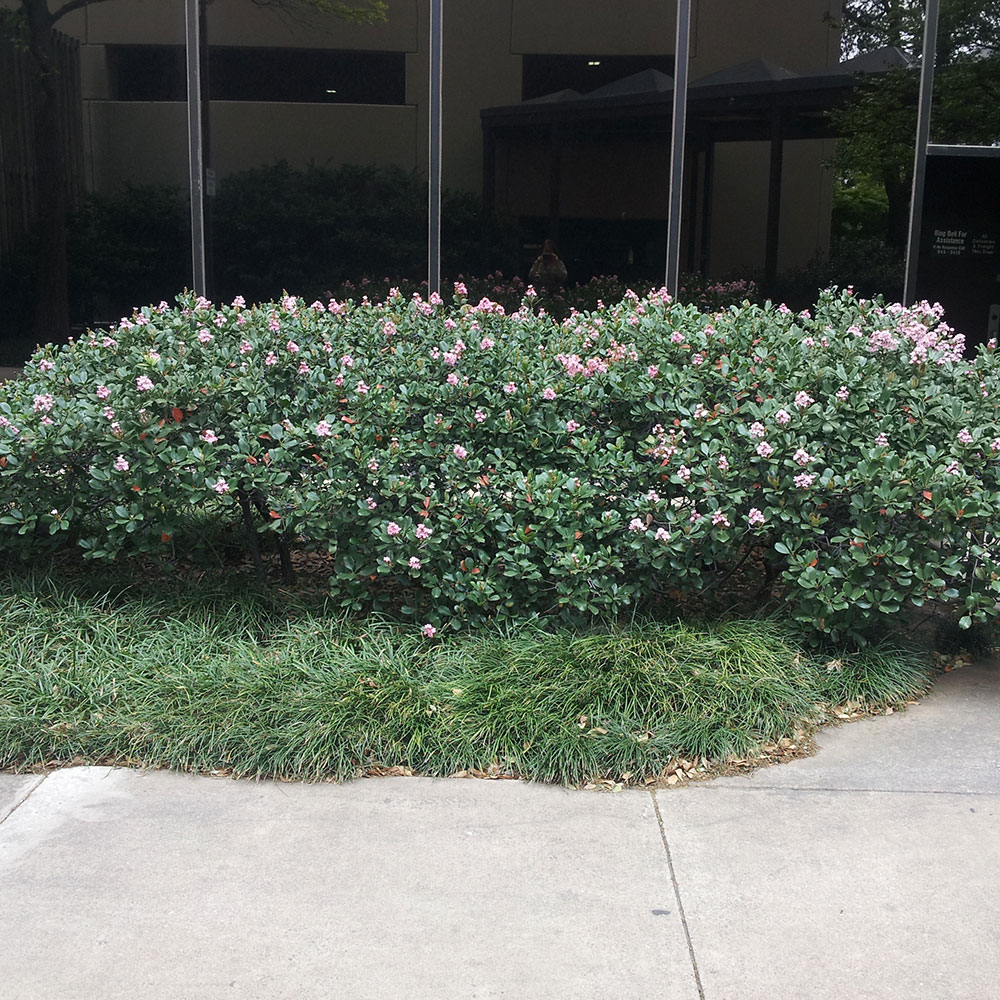

Water when temperature reaches 40° F, a temperature at which water can be absorbed by the roots.Įllen Peffley taught horticulture at the college level for 28 years, 25 of those at Texas Tech, during which time she developed two onion varieties. Evergreen Woody Shrubs (abelia, Asian jasmine, azaleas, banana shrub, camellias, eleagnus, fatsia, fig ivy, gardenias, Indian hawthorn, Japanese blueberry, ligustrum, loquat, loropetalum, oleander, pittosporum, privet, sasanquas, sweet olive, Texas sage, viburnum, wax myrtle, etc. Moist soil stays warmer than dry soil and fully hydrated cells better withstand freezes. The day before a freeze is expected deep water roots root systems in dry soil are damaged worse than cold temperatures.
#Indian hawthorn texas freeze full
We all remember the sustained freezing temperatures that lasted a full 10 days. Along with other gardeners, Pam is afraid if there is repeat of last year’s freeze, it will kill plants that are trying so hard to come back. Pam is wondering if she should just continue to let bushes regrow at their own pace. of Lubbock asked about her Indian Hawthorn bushes that sustained heavy damage in the freeze and noted they are trying to come back. New growth on her shrubs is concentrated at the base with some new leaves scattered throughout and a few at the top yet brown dead leaves continue to hang on. ‘Jack Evans’ and ‘Enchantress’ are pink.Lubbock A-J reader Pam W. ‘Clara’ and ‘Snow’ are white-flowering compact varieties. ovata) is a large-growing white-flowering variety. They aren't durable enough anyway, so think twice about planting any more Indian Hawthorne. Update: During the long hard 0 o freeze of February 2021, most major trees around north Texas made it fairly well (with some exceptions) but many shrubs are toast – Indian hawthorn, pittosporum, Japanese and wax ligustrum, Chinese fringe flower ( Loropetalum sp.) and agaves are pretty much wiped out. Red tip photinia is rarely found for sale.ĭead Indian Hawthorne in spring 2021 after the February Arctic blast These same diseases also affects red tip photinia and pears (such as Bradford pear), pyracantha, quince and loquat. Both can be controlled with the Sick Tree Treatment. Problems: Leaf fungus ( Entomosporium) and fireblight. During the fall months birds and wildlife will feast on the beautiful blue fleshy fruit. The dark blue berries attract wildlife, especially birds that also use the shrub as shelter. The leaves of the Indian Hawthorn grow very thick, making it a great choice as a low hedge or ground cover. Attracts many kinds of butterflies and birds. Uses: Mass, foundation planting, low border, spring color. Native to Korea and Japan, southern China, Laos, Cambodia, Thailand and Vietnam. If pruning is needed, it should be done just after bloom. 2–5′ Spread 3–5′Spacing 2–3’Ĭulture: All varieties like well-prepared, well-drained beds and will do best in full sun. Leathery, dark evergreen leaves are rounded, about 2 to 3 inches long, turning purplish in winter.

Sizes of the varieties vary but generally a small evergreen shrub.

Habit: Evergreen shrub for sun or light shade. Rhapiolepsis indica rah-pee- oh-LEP- sis IN-dee- kahĬommon names: India hawthorn or Hong Kong hawthorn, Indian hawthorn Family Rosaceae


 0 kommentar(er)
0 kommentar(er)
